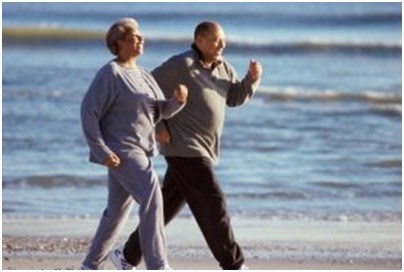We are all aware of the benefits of exercise. Such as aerobic exercise increases endurance and builds a strong heart. Weight training builds muscle, increases vascular density and increases bone density (to name a few).
But are you aware that exercise creates new brain cells? Or help ward off cancer and diabetes? Or even prevent the accumulation of the ‘wrong’ kind of body fat?
Well it can, and a whole lot more! Here are 7 cool facts to boost your incentive to keep you active.
1. Curbing Cancer
Exercising can indirectly reduce the risk of cancer by keeping off excess weight, or it can work more directly on the risk itself. Take colon cancer for instance; in studies at the Washington University, the most active individuals were 21% less likely to be diagnosed than those who were less active. Just not being sedentary is a good thing.
In contrast, individuals would need to be much more active to help lower the risk of breast cancer. Moderate to vigorous activity has given researchers consistent evidence that it lowers it.
No matter your age, start now. It’s never too late.
2. Creating New Brain Cells
As we age we lose cognitive function, and it’s quite noticeable compared to our younger counterparts. However, studies from the University of Illinois show that older individuals who are more fit, perform better than those that aren’t to the point where they’re sometimes no different than our younger generation.
Physical activity increases your reaction time and boosts your brain function. Aerobic exercise increases the supply of a protein called brain-derived neurotropic factor (BDNF), which promotes the growth of new nerve cells and synapses that are related to memory and learning. Seated deep in the hippocampus of the brain, BDNF is the active protein that keeps our memory in tact. As we age, the hippocampus shrinks and is one of the first parts to be damaged in Alzheimer’s.
Get your aerobic activity up, because that’s what’s going to help you increase the size of the hippocampus. Older brains can grow nerve cells too! Memory boosting, here we come!
3. Boosts Insulin Sensitivity
Both aerobic and strength training improve insulin sensitivity. Why is this important?
Insulin is a hormone that allows blood sugars to enter the body’s cells where it is either stored or used as energy fuel. As we age, become sedentary or eat a lot of processed foods, our bodies don’t respond to insulin as well which leads to sensitivity or resistance to the hormone. Insulin increases the risk of heart disease and type 2-diabetes.
Once you start exercising regularly 3 times a week, studies show that insulin sensitivities improve within 6 months by about 20-25%. A protein called GLUT4 moves glucose form the blood into muscle and fat cells. The more GLUT4 you have, the better your cells respond to insulin.
4. Creatine Builds Muscle
Creatine is an amino acid that makes energy available to muscles during times of high demand. Our body produces about 2 grams every day derived from the proteins we eat. As a supplement, creatine will help increase strength and muscle mass.
A study showed men in their 70’s using creatine increased their muscle mass where they could lift 40-60% more in their legs in 12 weeks than those on a placebo.
Creatine stimulates satellite cells, which are stem cells in the muscle. They help form new muscle fibre after damage to the tissue, and they prevent proteins from breaking down, which can help preserve bone.
5. Sitting Kills
We’ve all heard how sitting is the new cancer. People who sit the majority of their day have much higher mortality rates. Sitting increases our waist size, induces metabolic syndrome, which in turn increases your risk of heart disease, diabetes, high blood pressure, cancer, and the list goes on.
In a 12 year study of 17,000 Canadians done at the Pennington Biomedical Research Center in Baton Rouge, Louisiana, 20% of those who said sat almost all of the time had died, compared with 12% who sat for about ½ the time, and just 6% of those who sat almost none of the time. This was true of smokers and non-smokers alike, and lean vs overweight or obese.
Stand up and move.
6. Age Has No Barriers On Building Muscle
Muscles will still develop whether you’re nine or ninety. But the older we get, the more important it is to maintain a certain level. Muscles are the stability to our skeletal system; they bind us together. So if they’re weak, the body is very unstable.
Maintaining good strong muscles throughout life will enable you to move freely and reduce the risk of falls and injury. Keeping a certain level of muscle mass keeps our skin looking younger and tighter by ‘filling’ up the space when our skin tends to sag.
7. Prevents Visceral Fat
This is the BAD fat! It accumulates around our organs and is linked to insulin resistance, heart disease and diabetes. Men with big bellies tend to have a large amount of visceral fat.
Exercise and eating right will reduce this dangerous fat as long as you are consistent. Aerobic exercise 6 times a week has proven to be the best method.
Yours in health!



